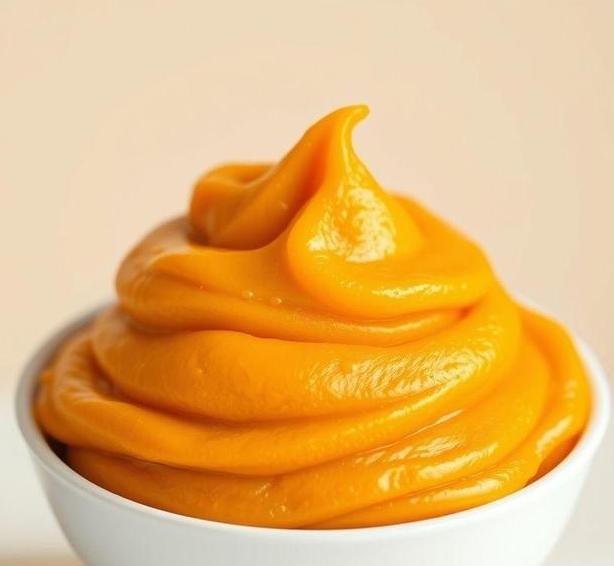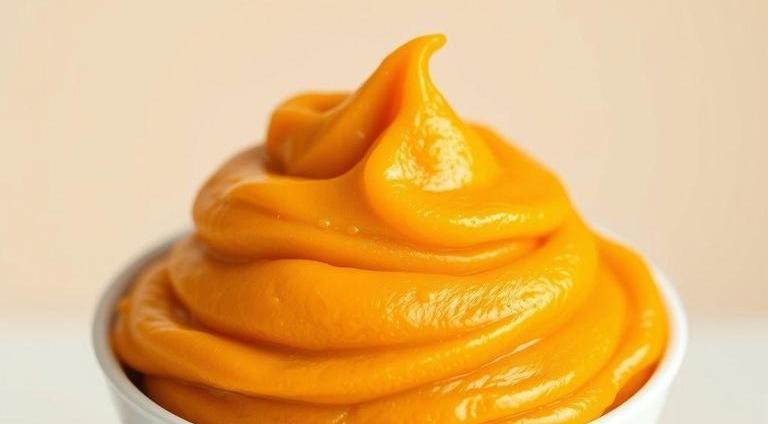Pumpkin puree is one of those kitchen staples that can bring a cozy, autumnal feel to just about any recipe. Whether it’s in your pumpkin bread, soup, pies, or even a savory pasta dish, the rich, slightly sweet, and earthy flavor of pumpkin puree can elevate the simplest of meals. But, as with any perishable product, you might be left wondering: can pumpkin puree go bad?
If you’ve ever found a half-used can of pumpkin puree in the back of your pantry or fridge and wondered whether it’s still safe to use, you’re not alone. The shelf life of pumpkin puree is a common concern, especially when dealing with leftovers or canned goods. And, as much as we love its versatility and convenience, it’s important to understand how long pumpkin puree lasts, how to store it properly, and how to spot the signs of spoilage. That way, you can be sure that every spoonful you scoop is fresh, safe, and tasty.
So let’s dive into this pumpkin-packed topic and explore everything you need to know about pumpkin puree’s shelf life, storage tips, and spoilage indicators.
Can Pumpkin Puree Go Bad?
The short answer: yes, pumpkin puree can go bad. While it’s a long-lasting food product when properly stored, it does have a shelf life. Whether you’re using fresh, homemade puree or canned pumpkin puree, both can spoil if not stored correctly or if left unused for too long.
- Homemade pumpkin puree: This is made by cooking and pureeing fresh pumpkins. Since it’s fresh, it doesn’t have the preservatives that canned versions might contain, making it more vulnerable to spoilage. Its shelf life is shorter, especially when refrigerated.
- Canned pumpkin puree: The canned version is more shelf-stable thanks to the canning process, which preserves it for longer. However, once opened, it becomes more susceptible to spoiling and needs to be treated carefully to extend its use.
Whether you’re dealing with an open can or homemade puree, proper storage is essential to prevent it from going bad too quickly.
Shelf Life For Pumpkin Puree

Understanding the shelf life of pumpkin puree is crucial for both homemade and store-bought versions. Below is a detailed breakdown of how long you can keep pumpkin puree under different circumstances:
-
Unopened Canned Pumpkin Puree
- Shelf Life: Typically, unopened canned pumpkin puree can last 1-2 years beyond its printed expiration date if kept in a cool, dark place (like a pantry). Cans are sealed airtight, which helps preserve the puree’s freshness for a long time.
- Storage Tip: Ensure the can is stored in a cool, dry place away from direct sunlight, moisture, or extreme temperatures to maximize its shelf life.
-
Opened Canned Pumpkin Puree
- Shelf Life: Once you open a can, the clock starts ticking. Opened pumpkin puree typically lasts 5-7 days in the fridge.
- Storage Tip: Always transfer any leftover puree into an airtight container before refrigerating it. Avoid leaving it in the can once opened, as exposure to air can lead to oxidation, which affects both flavor and safety.
-
Homemade Pumpkin Puree
- Shelf Life: Homemade puree lasts about 3-5 days in the fridge. Since it doesn’t contain preservatives, it spoils more quickly than the canned version.
- Storage Tip: Always cool the puree completely before refrigerating. To extend its life, you can freeze homemade puree (more on that below!).
Common Signs Of Spoilage
Knowing the signs of spoilage is key to ensuring you’re not consuming spoiled pumpkin puree, which could lead to foodborne illness. Here’s how to tell if your pumpkin puree has gone bad:
-
Off Smell
- Fresh pumpkin puree has a mild, slightly sweet aroma. If your puree smells sour, musty, or off in any way, it’s likely spoiled and should be discarded.
-
Mold Growth
- One of the most obvious signs of spoilage is mold. If you spot fuzzy patches of green, blue, or white mold, it’s time to toss the puree. Even small amounts of mold can mean that the entire batch has gone bad.
-
Color Change
- Fresh pumpkin puree is a vibrant orange color. If the color begins to dull or darken to a brownish or gray hue, it could be a sign of oxidation or bacterial growth.
-
Unusual Texture
- While pumpkin puree is typically smooth and creamy, any clumps or changes in texture-like it becoming excessively watery or overly thick-can be an indicator that something’s wrong.
-
Off Taste
- If the puree looks and smells fine but you’re unsure about its safety, the final test is the taste. If it tastes sour, off, or fermented, it’s definitely gone bad.
How To Store Pumpkin Puree?

Proper storage is your best defense against spoilage. Here’s how you can store both homemade and canned pumpkin puree to keep it fresh for as long as possible:
-
Canned Pumpkin Puree (Unopened)
- Storage Location: Store unopened cans in a cool, dry, and dark place. A pantry or cupboard works best. Avoid storing them in places with extreme temperature fluctuations, like near a stovetop or refrigerator.
- Shelf Life: Up to 2 years, as mentioned, if stored correctly.
-
Canned Pumpkin Puree (Opened)
- Storage Containers: Once opened, transfer the puree to a glass or plastic airtight container. This will help prevent contamination from the air and preserve its flavor.
- Refrigeration: Store in the fridge for up to a week.
-
Homemade Pumpkin Puree
- Refrigeration: Store homemade puree in an airtight container in the fridge. It’ll last about 3-5 days.
-
Freezing for Longer Storage: For longer-term storage, you can freeze pumpkin puree. Divide it into smaller portions (like 1-cup servings) and store in freezer-safe containers or freezer bags. This way, you can thaw just the amount you need. Frozen pumpkin puree can last 3-6 months in the freezer.
- Tip for Freezing: Label containers with the date so you can easily track how long it’s been stored.
Expert Tips
- Avoid Cross-Contamination: Always use clean utensils when scooping out pumpkin puree from a can or jar. Never introduce bacteria from raw food (like meat) into the puree.
- Reheat with Care: When reheating pumpkin puree, do so slowly on the stovetop or in the microwave to avoid burning. If your puree is too thick after reheating, add a bit of water or broth to thin it out.
- Freezer-Friendly: If you’re not planning to use all the puree, freezing it in ice cube trays is a convenient option. Once frozen, transfer the cubes to a freezer bag for easy portioning.
- Label and Date Everything: If you freeze homemade puree, always label the containers with the date so you know exactly how long it’s been in the freezer. Even in the freezer, pumpkin puree can lose flavor over time, so it’s best to use it within 6 months.
FAQs
How Long Does Pumpkin Puree Last In The Fridge?
Pumpkin puree can typically last up to 5-7 days in the refrigerator when stored in an airtight container. It’s important to check for any signs of spoilage, such as mold or off smells, before using it.
Can I Store Pumpkin Puree In The Freezer?
Yes, pumpkin puree can be frozen for up to 3-6 months. To freeze, place it in an airtight container or freezer bag, leaving some space for expansion. It’s best to use it within 3 months for the best flavor and texture.
How Can I Tell If Pumpkin Puree Has Gone Bad?
Signs that pumpkin puree has gone bad include a sour or rancid smell, discoloration (such as dark or off-colored patches), and mold growth. If any of these signs are present, discard the puree.
Can I Still Use Pumpkin Puree If It Smells Sour?
No, sour-smelling pumpkin puree is a clear indication of spoilage, and it should be discarded. A sour odor typically indicates that the puree has gone bad due to bacterial or yeast growth.
Does Homemade Pumpkin Puree Spoil Faster Than Canned Pumpkin Puree?
Yes, homemade pumpkin puree tends to spoil faster than canned pumpkin puree because it lacks preservatives. Homemade puree should be used within 5-7 days, while canned pumpkin can last longer in the pantry or fridge, typically up to 1-2 years if unopened.
Can I Use Pumpkin Puree Past Its Expiration Date?
Using pumpkin puree past its expiration date is not recommended, especially if it has been opened. If the puree has been stored properly and shows no signs of spoilage, it may still be safe to use, but always do a sensory check first.
How Should I Store Pumpkin Puree To Prevent It From Going Bad?
To store pumpkin puree properly, keep it in an airtight container or a sealed plastic bag in the refrigerator. If you plan to store it for a longer period, freezing is the best option to prevent spoilage.
Can Pumpkin Puree Be Reheated Safely After Being Stored In The Fridge?
Yes, pumpkin puree can be reheated after being stored in the fridge. Simply heat it on the stovetop or in the microwave, but make sure it is heated thoroughly to kill any potential bacteria.
Does The Texture Of Pumpkin Puree Change When It Goes Bad?
Yes, when pumpkin puree spoils, the texture may change. It can become watery, slimy, or overly thick, which are signs of deterioration. If the texture is significantly altered, it is best to discard it.
Is It Safe To Use Pumpkin Puree If There Is Condensation Inside The Container?
Condensation inside the container is normal if the puree was stored in the fridge, but excessive moisture can lead to spoilage. If the puree shows signs of mold or an off smell, it should be discarded.